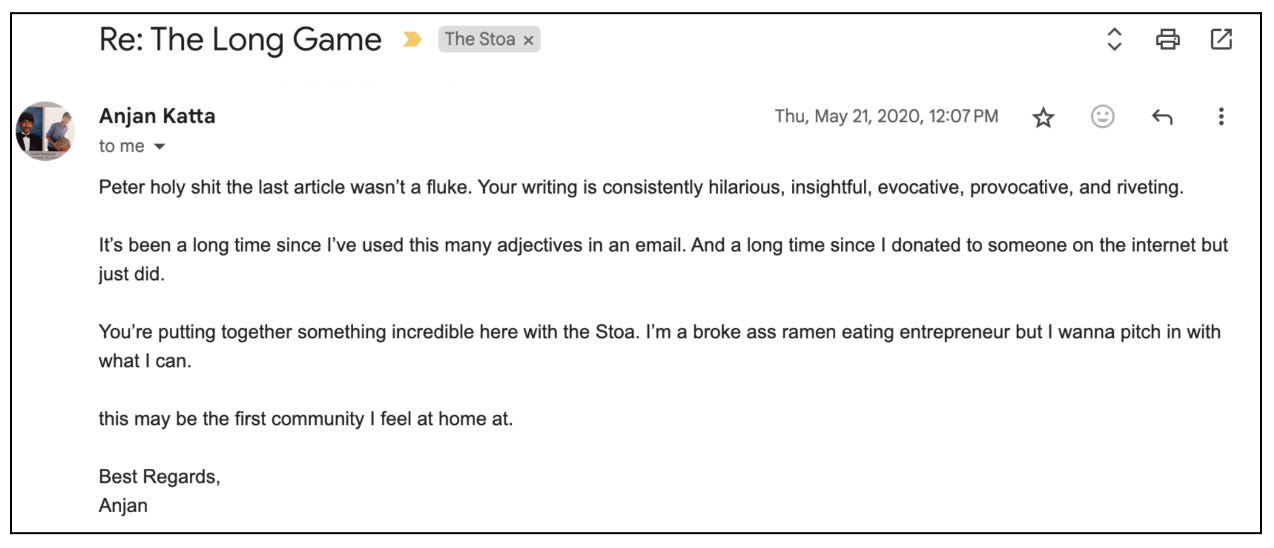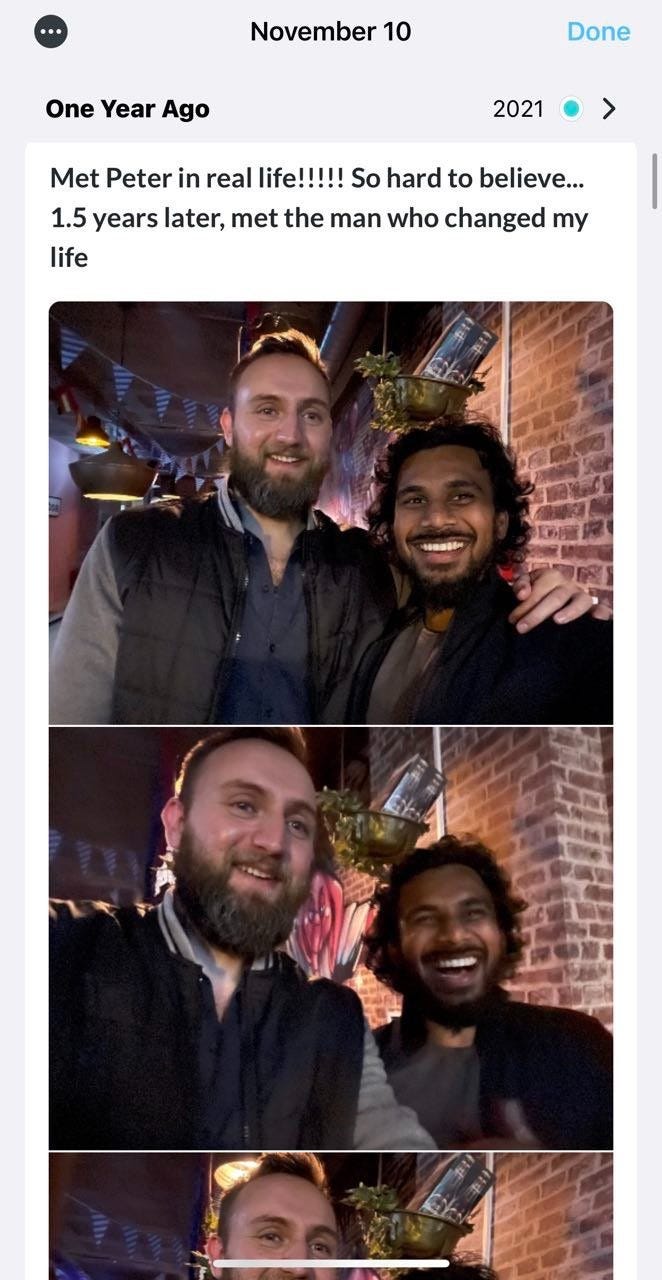There's a certain magic as the spring equinox approaches. A potent energy flows through me. It’s difficult to articulate, but it feels like life itself. The Stoa came into being on the equinox, acting as a beacon, gathering spiritual comrades through secret handshakes in dark forests, while our conversations were veiled in the most pretentious meta jargon we could muster. It was our way of conducting a reverse Turing test to identify those among us who felt a calling towards a certain way of human becoming.
I’ve encountered many remarkable individuals through The Stoa, and Anjan Katta was one of them. He was one of the regulars during "peak stoa" in 2020 during Covid lockdowns. I did not know much about him but sensed good vibes from his emails responding to my daily pandemic journals.
Quickly, our aporic bromance blossomed.
He had the curious habit of asking every guest at The Stoa about "Moloch," the Canaanite deity associated with child sacrifice. He used the term as Scott Alexander did in his essay, "Meditations of Moloch." In Alexander's repurposing, Moloch is a "hyperobject" representing humanity's perennial coordination problem, where systemic incentives lead to collectively harmful consequences despite individuals' rational actions. Or, as Anjan explains it:
In late 2021, Camille and I escaped the Moloch atmosphere emerging in Canada at the time and started travelling Europe, finding ourselves in Lisbon at the same time as Anjan, giving us the chance to finally meet in person. And of course, we quickly found ourselves drunk at a hipster bar.
During our in-person encounter, it dawned on me what the daemon was calling Anjan to do. He showed me a prototype of a new kind of computer he was working on. In my drunken hands was the world's first blue-light-free computer, which had a paper-like display similar to a Kindle and a high refresh rate like an iPad. It’s called Daylight, a sunlight-readable computer created with pure heart. It is about to be released soon, and I just received one in the mail earlier this week.
It’s a beauty. I love reading articles but hate reading them on my phone or computer. Daylight will be a game-changer; soon, it will be the only computer I will write on. Recently, Anjan contacted me, seeking assistance with the release. He requested that I write a manifesto capturing the philosophical essence of this tablet, as well as the vision for the series of products planned to succeed it.
I have been embracing Anjan's vision, which, put simply, advocates for us to have a healthy relationship with technology. For this to happen, we need to respond to the “evolutionary mismatch”—the discordance between our genetic makeup and the modern environment—that our bodies are experiencing due to the accelerating technological situation we are encountering.
The current technological trajectory in our society involves screens moving closer to our faces, and eventually, inside our heads, leading to ongoing addictive and dissociative effects. Anjan envisions a different path: technology exists outside of us, in harmony with nature, allowing us to be fully present in our bodies. This approach aligns with the aesthetic vibe of solarpunk.
I am writing the “crack” version of the manifesto, the one where we get to be as wild as possible. It must be wild because Anjan is a wild man with wild influences. I am refining the manifesto, but it's a daunting process because it has to be philosophically coherent with the techno-holistic timelines we are called to see manifest.
One of my philosophical advisors,
, told me that manifesto writing is no joke and that one needs to think of oneself as a prophet when writing. This makes sense because manifestos are like “performative utterances.” They not only describe present reality but manifest a new one while doing so. They are like philosophical spells, engendering one of the many timeline options before us.I am taking inspiration from two technological-themed manifestos, the thesis and antithesis, for a potential synthesis. The first manifesto is Industrial Society and Its Future by Ted Kaczynski, the Unabomber. The second manifesto is the Techno-Optimist Manifesto by
. I’ve provisionally named our manifesto the Living Manifesto, as it feels appropriate for it to embody life, especially with the bodies who live with it.Anjan asked me to be a Philosopher-in-Residence at Daylight, to work through this manifesto and to help him stay philosophically coherent through its launch. We are playing with the idea that this role could evolve into a “Chief Philosophy Officer,” a role I have envisioned for some time. Such a role would serve a sacred position within companies, not driven by the profit motive or subject to the whims of the market, aiming to guide with as little foolishness as possible.
I’m enlivened by how things will unfold, aware that a heightened focus on becoming wiser is crucial for fulfilling such a role. When I need extra concentration, I resort to various techniques, including smelling salts. Common among hockey players and other athletes for boosting alertness, these salts were traditionally used to revive individuals who had fainted. Nowadays, they offer a legal means for athletes to momentarily sharpen their focus.
While they may not be entirely beneficial for me, and I use them sparingly, the salts remain on my desk as a symbol. They reflect philosopher Peter Sloterdijk's view of philosophy as an existential “multisport” for “athletes of life,” which resonates with my understanding of wisdom and its demands. Should the role of Chief Philosophy Officer come to fruition, especially one dedicated to aiding a wild man in his showdown with Moloch, honing my focus with the spirit of an athlete of life will be needed.
If you have any questions, insights, feedback, or criticism on this entry or more generally, message me below (I read and respond on Saturdays) …








